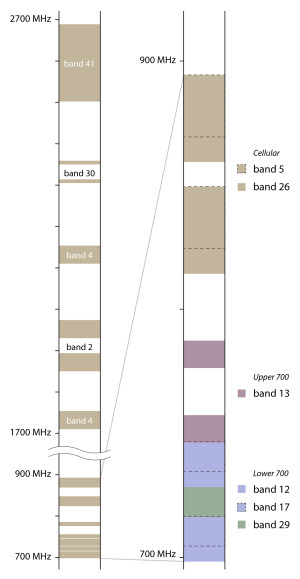Lower 700 band

The radio frequency band spanning 698 - 746 MHz.
The band is divided into five blocks. Blocks A, B, and C are designed for two-way cellular phone/data service. Blocks D and E are designed for one-way (broadcast) radio service.
When AT&T first launched its 4G LTE network, it only used blocks B and C, a frequency range known as band 17.
Other carriers use all three two-way blocks (A, B, and C). That larger range is known as band 12.
Some of AT&T's first exclusive 4G LTE phones only supported band 17 (not 12), and therefore would not work on other networks that use block A. But AT&T and phone makers have since transitioned to band 12, ensuring broader compatibility in the lower 700 MHz band. Band 17 is no longer relevant in the US.
See: Upper 700 band
Last updated May 20, 2024 by Rich Brome
Editor in Chief Rich became fascinated with cell phones in 1999, creating mobile web sites for phones with tiny black-and-white displays and obsessing over new phone models. Realizing a need for better info about phones, he started Phone Scoop in 2001, and has been helming the site ever since. Rich has spent two decades researching and covering every detail of the phone industry, traveling the world to tour factories, interview CEOs, and get every last spec and photo Phone Scoop readers have come to expect. As an industry veteran, Rich is a respected voice on phone technology of the past, present, and future.









